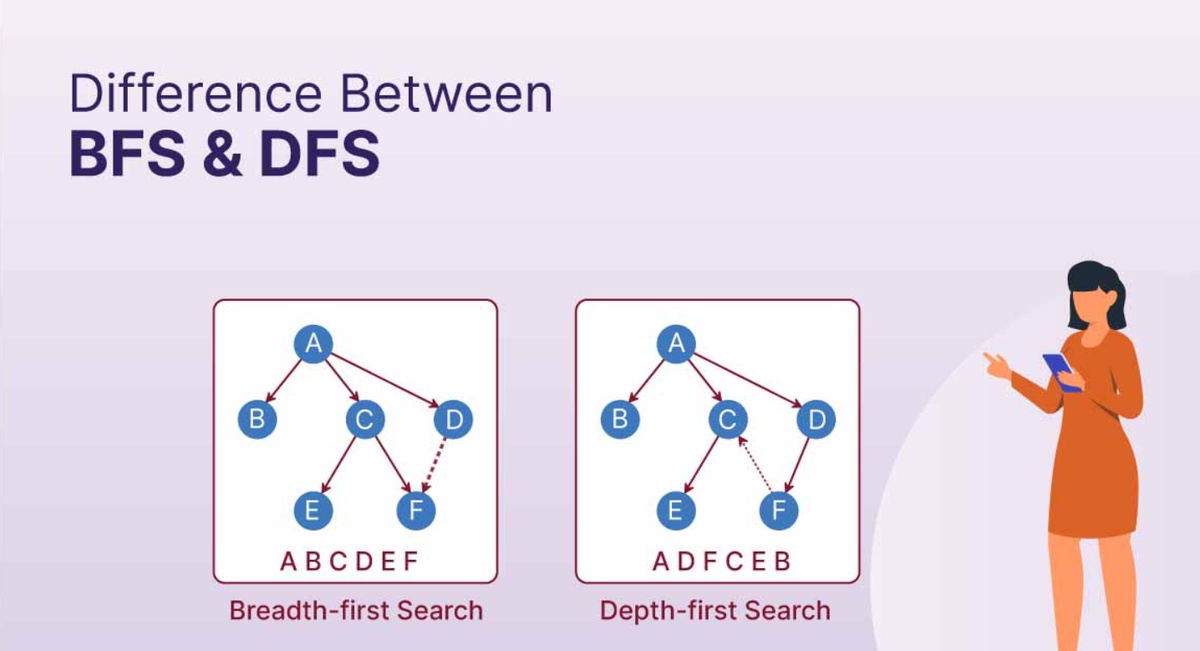In the realm of algorithms and graph theory, understanding the memory usage characteristics of Breadth-First Search (BFS) and Depth-First Search (DFS) is pivotal. Let's delve into the intricacies of these algorithms to decipher which one typically requires more memory and the underlying reasons
BFS Memory Usage: A Comprehensive Analysis
Memory Utilization in Breadth-First Search (BFS)
BFS, known for its systematic exploration of neighboring nodes, exhibits distinct memory usage characteristics. The algorithm employs a queue data structure to manage the order in which nodes are traversed.
Queue: The Memory Hog in BFS
The crux of BFS lies in the queue, a dynamic data structure that ensures the algorithm explores nodes in a layer-by-layer fashion. Each level of nodes is stored in the queue until fully explored, leading to a potentially substantial memory footprint.
Memory Complexity of BFS
The memory complexity of BFS is directly proportional to the breadth of the explored nodes. In scenarios where the graph is wide or contains numerous layers, the memory requirements of BFS can be significant.
Optimizing BFS Memory Usage
Efforts to optimize memory usage in BFS often involve fine-tuning the data structures used for queue management. However, the inherent nature of BFS, requiring the storage of entire levels, makes it inherently memory-intensive.
DFS Memory Usage: Navigating the Depths of Memory
Memory Characteristics in Depth-First Search (DFS)
DFS, renowned for its adventurous exploration of graphs, takes a different approach to memory utilization. The algorithm relies on a stack to keep track of nodes along a particular branch, creating a memory usage profile distinct from BFS.
Stack: The Memory Companion in DFS
Unlike BFS, DFS employs a stack to manage the traversal of nodes. As DFS delves deep into a branch before backtracking, the stack retains information about the nodes, contributing to a memory footprint that evolves with the depth of exploration.
Memory Complexity of DFS
The memory complexity of DFS is tied to the depth of the explored branch. In cases where the graph has deep paths or contains lengthy branches, the memory requirements of DFS can surpass those of BFS.
Balancing Depth and Memory Usage in DFS
Optimizing memory usage in DFS often involves striking a delicate balance between the depth of exploration and the available system resources. Careful implementation of the stack and backtracking mechanisms is crucial to managing memory efficiently.
Comparing Memory Usage: BFS vs. DFS
Head-to-Head Memory Analysis
When comparing the memory usage of BFS and DFS, the choice between breadth and depth becomes apparent. BFS tends to consume more memory in scenarios where the graph is wide, with many interconnected nodes at each level. In contrast, DFS's memory usage grows with the depth of exploration, making it more memory-intensive in graphs with lengthy branches.
Factors Influencing Memory Requirements
The memory requirements of both algorithms are influenced by the nature of the graph—whether it is wide, deep, or a combination of both. Additionally, the available system resources play a crucial role in determining the feasibility of implementing BFS or DFS in a specific scenario.
VISIT ALSO: 7 benefits of advertising on social media
Optimizing Memory Usage in Practice
Practical Strategies for Memory Optimization
Optimizing memory usage in BFS and DFS involves a nuanced approach. Considerations such as the nature of the graph, available system resources, and the specific requirements of the task guide the implementation.
- Choosing the Right Algorithm
Selecting between BFS and DFS depends on the characteristics of the graph. For wide graphs, BFS may be more suitable, while deep graphs may benefit from the exploration depth provided by DFS.
- Implementing Efficient Data Structures
Fine-tuning the data structures used in BFS (queue) and DFS (stack) is crucial. Employing optimized data structures can mitigate excessive memory consumption.
- Considering System Resources
Awareness of the available system resources is vital. Balancing the exploration needs of the algorithm with the system's memory capacity is fundamental to successful implementation.
VISIT ALSO: What is Red-Black Tree: Your Guide to a Balanced Data Structure
Conclusion: Striking the Balance
In conclusion, the memory usage characteristics of BFS and DFS vary based on the structure of the graph. BFS excels in scenarios where the graph is wide, demanding memory for each layer. DFS, on the other hand, becomes more memory-intensive with deep exploration. Striking the right balance between breadth and depth, coupled with efficient data structure implementation, is key to optimizing memory usage in graph traversal algorithms.


No comments yet